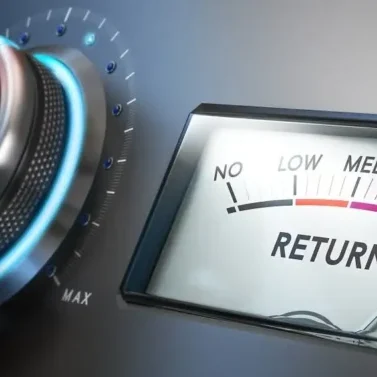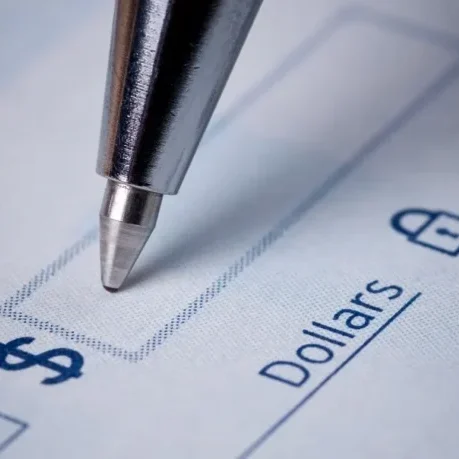What is an Equity Injection?
Summary: The equity injection is an investment of capital that a buyer contributes to a business acquisition. It is integral to most acquisitions because every lender requires one.
The size of the equity injection varies and depends on the transaction's size, the target company's profile, and the lender's risk tolerance. The typical range is 5% - 20% of the transaction. In this article, we cover:
- What is an equity injection?
- How are equity injections calculated?
- Why is it required?
- Can the equity injection be financed?
1. What is an equity injection?
Most business acquisitions using lender financing require the buyer to deploy some of their funds to buy the company. This buyer contribution is known as an "equity injection," though some buyers also refer to it as a "down payment."
The size of the equity injection depends on several factors, such as transaction size, lender preference, and risk profile. The size of the equity injection is specific to the transaction, and there is no "standard" number. The figures we provide in this article are based on our experience.
a) Small business acquisitions (under $5 million)
Most SBA-backed lenders require a minimum equity injection of 10% of the total project cost. The equity injection requirement can be reduced to 5% in select cases. However, the seller must provide 5% of seller financing and take a standby on their loan. The standby means that they don't collect payments for some time.
Transactions that don't use SBA-backed financing also require an equity injection. However, these transactions have stricter criteria and require a substantially higher contribution.
b) Lower market ($5 million - $10 million)
Lower market acquisitions typically require a 20% (average) equity injection. These transactions face a unique situation. They are too large to qualify for conventional SBA-backed financing. However, they are still too small for most middle-market lenders. Only a few boutique private credit firms work in this market, which leads to higher equity injection requirements.
c) Middle market (over $10 million)
Middle-market transactions typically have equity injections of around 10%, though it can be lower. Larger transactions tend to have more flexible requirements due to lender competition.
2. How to calculate the equity injection
One of the confusing aspects of equity injections is that they aren't always calculated the same way. Small business acquisitions typically use SBA-backed financing and must follow the SBA guidelines for equity injections. Lower-market and middle-market acquisitions don't use SBA-backed financing. Consequently, they must follow the requirements set by the lender participating in the transaction.
a) Small business acquisitions (under $5 million)
The equity injection is based on the total transaction cost, not the loan size. The total transaction cost includes:
- Cost of the business
- Additional capital expenditures (if any)
- Extra cash flow for operations (if any)
- SBA guarantee (if any)
- Other transaction costs
Calculate the total transaction cost by adding all the costs of buying the business. The equity injection is usually a percentage of that amount. Note that the amount of seller financing, which reduces the loan size, does not affect the equity injection size of small business acquisitions. This can be counterintuitive and confuse new business buyers.
Here is an example to illustrate the point. Let's assume two hypothetical transactions totaling $1,000,000 each with a 10% equity injection requirement. We will call them opportunities A and B.
- Opportunity A: The buyer gets $400,000 of seller financing and needs to finance the remaining $600,000.
- Opportunity B: The buyer does not get any seller financing and needs to finance $1,000,000.
Both opportunities have the exact same total transaction cost. Consequently, both buyers need an equity injection of $100,000 or 10% of $1,000,000. Note that the amount of seller financing they negotiate and the loan size they request are not used in the calculation.
To learn more, read "What is the cost of buying a business?"
b) Lower and Middle market acquisitions (over $5 million)
The equity injection in lower-market and middle-market transactions is determined as a percentage of the debt facility rather than the whole transaction. Consequently, seller financing and seller equity rollovers can reduce the size of the equity injection because they reduce the amount of lender debt required for the acquisition.
To learn more, read “How to finance a middle-market business acquisition.”
3. Why is an equity injection required?
Lenders require an equity injection as a condition of financing the acquisition. It lowers their risk and protects their investment in the transaction.
a) Shows buyer commitment
The injection shows that the buyer is committed to the purchase and will stay on if the situation becomes challenging. Experience shows buyers who have not committed funds have no incentive to stay on if things become complicated. Remember that a lender never wants to be in the position of taking over a troubled business.
b) Protects against value drops
The injection gives the lender a financial cushion that protects them against company value drops. This cushion allows the acquisition to absorb a modest drop in value without affecting the lender's principal.
c) Covers valuation differences
Lastly, the equity injection covers any valuation differences between the seller, the lender, and the buyer. Let's assume that a seller wants to sell their business for $1,000,000. However, after an appraisal, the lender considers the company worth only $800,000.
The lender will base its financing offer on the $800,000 valuation. This situation leaves a $200,000 gap to meet the seller's pricing requirement. The transaction could be structured as follows to cover the difference:
- Lender valuation: $800,000
- Seller price: $1,000,000
- Loan: $720,000 (90% of $800,000)
- Equity injection: $280,000 ($80,000 + $200,000)
4. Can I finance the equity injection?
Buyers cannot finance the equity injection. The funds cannot come from loans or the seller or be secured by the assets of the target business. That would defeat the purpose of the equity injection, which is a measure of buyer commitment to the transaction's success.
Funds for the injection come from personal sources. The most common equity injection sources include:
a) Personal savings
Many buyers start saving for their acquisition years before they can actually purchase the business. They diligently save a portion of their salary every month and put it in a savings account. They never touch the money and accumulate as much as they can. This method is probably the best and safest way to get the funds. It can also take several years to reach the objective.
b) Personal investments
Buyers can also liquidate existing investments in stocks and mutual funds to cover the cost of the equity injection. Like using their savings, this option requires the diligence to build an investment account up to the right amount. This method has some risk since investments can fluctuate and lose value.
c) Working with partners
Buyers who don't have sufficient funds can also consider partnering with affluent individuals. Keep in mind that the partners are also owners of the business and must meet all of the financing requirements.
d) Retirement funds
In principle, a buyer could liquidate their retirement savings (e.g., 401K, IRA, etc.) to pay for the equity injection. We consider this option too risky for most buyers. The buyer is betting their retirement on the success of the acquisition. Unfortunately, the risk of a negative outcome could have serious consequences.
e)Home equity
In some situations, a buyer could extract equity from their homes to pay for the equity injection. Common options include refinancing the home or getting a Home Equity Line Of Credit (HELOC).
Much like using your retirement funds, this strategy is too risky for most buyers. Ultimately, the buyer bets their home that the business will succeed.
f) Their companies
Buyers can use the equity of a business they currently own as the equity injection (or part of it) as long as the business is also rolled into the acquiring entity. This is more common in lower-market and middle-market acquisitions than small business transactions.
Note: Using retirement funds or home equity to pay for an equity injection can have serious consequences. Consider speaking with a qualified financial professional (e.g., CPA) before taking any action. A professional can help you determine the best solution for your situation.
Want to finance a business acquisition?
The first step to work with us is to submit this form. Once we review it, one of our associates will contact you to discuss the specific details of your acquisition.







